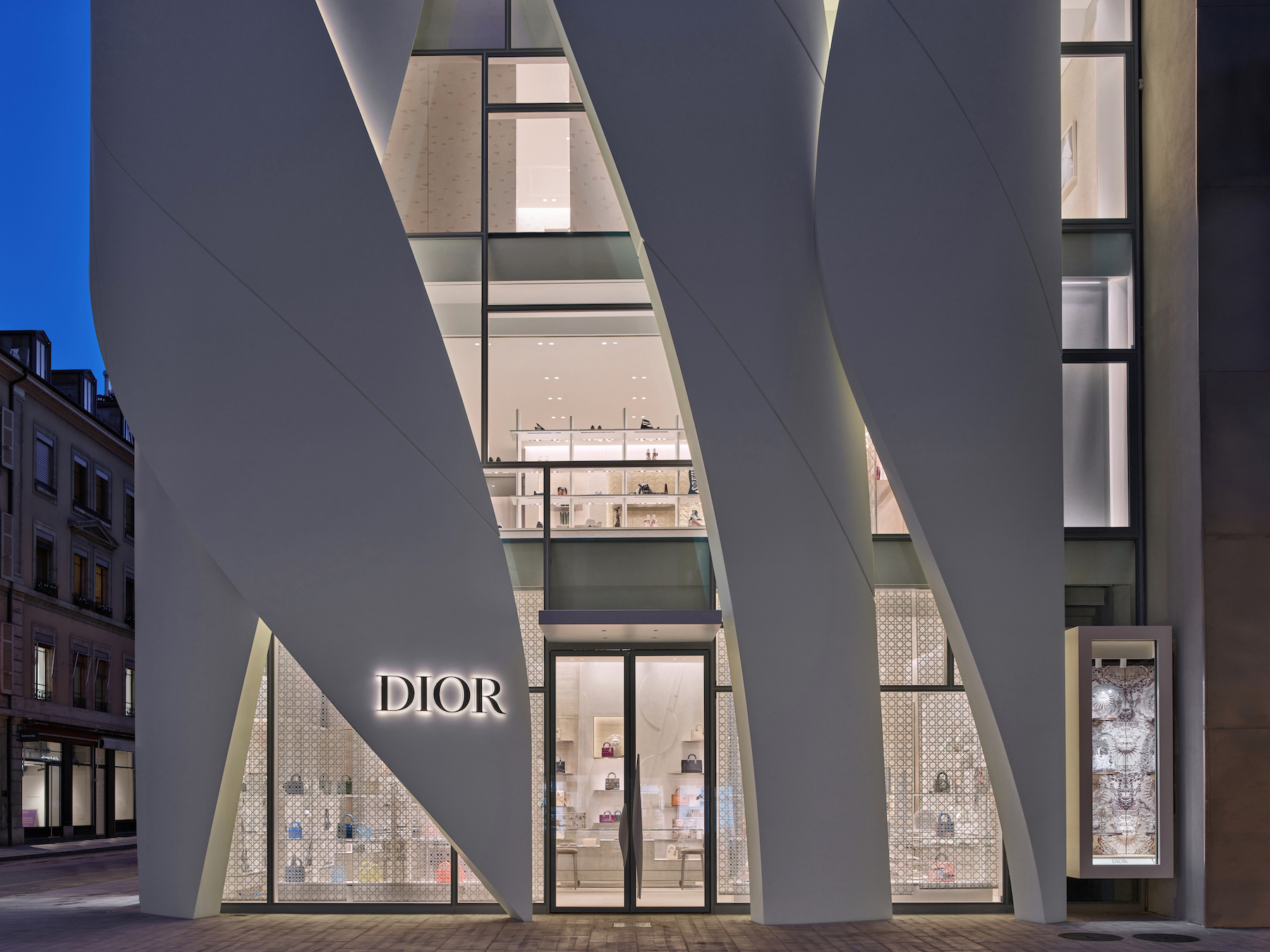The new Dior boutique has blossomed like an arum in Geneva
The Rue du Rhône has taken on a whole new look since the Dior boutique, designed by architect Christian de Portzamparc, opened its doors on February 27. The building, like a flower just in bloom, is the stuff of urban poetry. Photos: Jonathan Taylor. Text: Isabelle Cerboneschi
Christian de Portzamparc, the French architect who redesigned New York’s famous skyline, has placed a building of rare poetry in the centre of Geneva: a barely-opened flower enclosing the new Dior boutique at its heart. A “symbolic building”, as he calls those places that serve as landmarks in a city.
Since the scaffolding came down and revealed this architectural sculpture, the face of the Rue du Rhône has changed. All along this street, which is not known for its architectural extravagance, you will find the boutiques of fashion labels, major jewellers and watchmakers, housed in large elegant rectangles that punctuate the artery, distinguished above all by their artistically decorated windows. And then there’s this architectural sculpture, a kind of gigantic arum that seems to have chosen to grow here, on the Geneva asphalt.
As with the boutique in Seoul, Geneva’s big sister, the architect was given carte blanche. I met him when he designed the Korean flagship and he told me the following: “Little by little, the idea emerged of doing something with the softness of a couture fabric. I thought of Christian Dior’s work, his relationship with surface and fluidity. On the outside, they are vertical shells assembled together, with the joints forming lines that are like seams. »
I wasn’t able to speak to him at the Geneva inauguration, so I’ll rely on what he told me then. The large white petals are “like a boat hull, made of resin with very strong fibreglass. They were made on a huge wooden mould. We couldn’t make these hulls that were both long and wide, because we wouldn’t have known how to transport them. They were assembled on site, like an aeroplane, and are held together by a framework. »
What did he want to represent? “You can take it any way you like: flower, corolla, canvas. I didn’t start with a flower, or a dress, or Monsieur Dior: I did what I wanted to do. If I’d started from fashion, everything would be backwards: the ‘dress’ would spread upwards. It’s something else than a dress or a flower, but in the mind it can communicate with this idea. » In Geneva, he mentioned caryatids, the statues of young women that replaced the columns. So be it. Architecture is a work of art, and those who look at it also play a part in defining it. This is one of the freedoms that art offers us: not to force us and let us believe what we see and not what we are told.
Let’s move on quickly to the interior. A wall stretches across the 6 floors of the building, displaying white canvases and models of haute couture dresses and suits. Each floor has its own theme: shoes, bags, women’s ready-to-wear designed by Maria Grazia Chiuri, the men’s line designed by Kim Jones and jewellery fantasies by Victoire de Castellane. The upper floor, which opens onto a terrace, is a private lounge dedicated to Very Important Customers, who can enjoy a cup of tea or coffee while gazing out over the fountain.
The space is decorated with numerous works of art by Pamela Rosenkranz, Ugo Rondinone, William Coggin, Martin Kline and Dashiell Manley, in homage to Christian Dior, the couturier-founder who was a gallery owner and collector. A number of archival sketches and iconic photographs by Brigitte Niedermair are on display. The private room is adorned with a fresco by François Mascarello, inspired by the paintings of Ferdinand Hodler, which sings of the beauty of the landscapes of Lake Geneva. Thirteen paintings by Thomas Trum punctuate the staircase.
I almost forgot a very important point. Christian de Portzamparc was awarded the prestigious Pritzker Prize in 1994, at the age of 50 (he is now 80), the highest distinction in architecture. He holds many other prizes and honorary titles, as France knows how to bestow on its luminaries (Commandeur des Arts et des Lettres, Officier de l’Ordre du Mérite, Chevalier de l’Ordre de la Légion d’Honneur, to name but a few).
This architect thinks beyond walls. His vision is wider than the spaces he delineates with walls, petals of fibre and concrete, pixels of glass. Christian de Portzamparc dreams of a city that connects, not excludes. He believes that urban planning can unite rather than separate. Is a luxury boutique designed to unite? On the inside, I don’t know, but on the outside, why not?





















